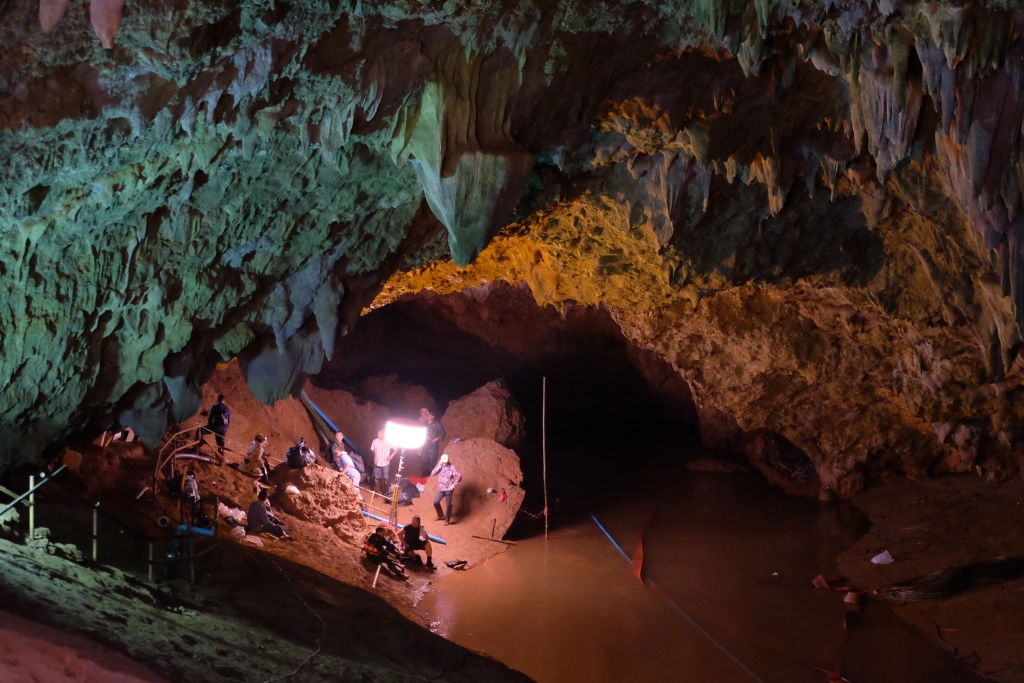How Doctors Treated the Thai Boys in the Harrowing Minutes After They Were Freed from Cave

The harrowing rescue of 12 boys and their coach from a cave in Thailand captured the world's attention last summer. But after the extraordinary feat to get them out of the cave, the work was far from over: The boys and their coach needed urgent medical care to prevent the occurrence of critical health issues such as hypothermia, according to a new report.
The brief report, published today (April 3) in the The New England Journal of Medicine, describes how the boys and their coach were treated immediately after they were pulled from the cave, before they were transported to a hospital via helicopter or ambulance.
When doctors first saw the boys, they had been anesthetized with the drug ketamine so that they would be unconscious during the grueling journey out of the cave in the arms of experienced divers. (The boys did not know how to swim, according to CNN.) They had spent hours in cold water wearing "poorly fitting wetsuits," according to the report, which meant they were in danger of hypothermia.
The suits were poorly fitting in part because many of the boys had been starving for a long period and had lost weight, said study lead author Maj. Dr. Chanrit Lawthaweesawat, the deputy secretary general of the Medical Association of Thailand and an anesthesiologist at Bumrungrad International Hospital in Bangkok. [Photos: Rescuers Race Against Time to Save Soccer Team Trapped in Thai Cave]
The patients were immediately given oxygen masks as well as sunglasses to protect their eyes, which hadn't seen sunlight for several weeks, the report said. Doctors needed to be careful when removing the patients' poorly fitted suits so that they didn't injure them or prevent them from breathing properly.
The boys and their coach were also given blankets to warm them up, and their temperature was monitored regularly.
On the first day, one of the four rescued boys developed hypothermia while he was being airlifted to Chiangrai Prachanukroh Hospital. When he arrived at the hospital, his temperature was 94.6 degrees Fahrenheit (34.8 degrees Celsius). A person is considered to have hypothermia when their core temperature dips to 95 F (35 C) or below.
Sign up for the Live Science daily newsletter now
Get the world’s most fascinating discoveries delivered straight to your inbox.
After the first day, doctors developed what they called the Thailand Cave Rescue Protocol to focus attention on the most critical issues facing the boys, which mainly involved factors affecting their breathing and hypothermia risk. Doctors called the protocol "ABC+H," which stands for "airway, breathing, circulation and hypothermia." A respirologist, pediatric cardiologist and anesthesiologist were assigned to focus on these issues.
Dr. Aaron Billin, immediate past president of the Wilderness Medical Society who wasn't involved in the rescue, called the approach a "very creative, quickly constructed plan for a very unique situation."
Because this situation was so specific, it would be difficult to generalize the procedures used to other environments, but "it worked well for this case," Billin told Live Science.
Additional measures to prevent hypothermia included the use of a heater blanket and whole-body foil wrap. The patients also received an infusion of warmed saline to help prevent hypothermia on their way to the hospital.
It "sounds like they took good steps to prevent hypothermia as best they could," said Billin, who noted that the authors reported only one case of mild hypothermia.
Caring for the rescued boys required a large medical team, with more than 50 to 60 doctors and more than 100 medical personnel on duty every day, the authors said.
The efforts of the rescuers and medical professionals ultimately paid off, with all the boys and their coach surviving the ordeal.
- Longest Caves in the World
- How Long Can Humans Survive in a Cave?
- The Very Real Risks of Rescuing Boys Trapped in Thai Cave
Editor's Note: This article was updated with reactions on the case from an expert in wilderness medicine.
Originally published on Live Science.

Rachael is a Live Science contributor, and was a former channel editor and senior writer for Live Science between 2010 and 2022. She has a master's degree in journalism from New York University's Science, Health and Environmental Reporting Program. She also holds a B.S. in molecular biology and an M.S. in biology from the University of California, San Diego. Her work has appeared in Scienceline, The Washington Post and Scientific American.









